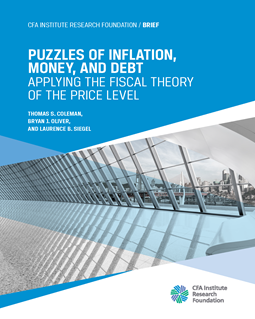
Overview
The fiscal theory of the price level (FTPL) provides an update and revision of monetary theory to address puzzles raised by the failure of both the new Keynesian theory (commonly used by central bankers) and neoclassical monetarism (in particular, the quantity theory of money as interpreted by Milton Friedman and Anna Schwartz)—puzzles such as the low inflation that followed the sustained expansionary monetary policies post-2008. We aim to summarize and explain the FTPL as developed by Eric Leeper, John Cochrane, and others.
The FTPL builds on neoclassical monetarism by observing that government liabilities—bonds, notes, bills, and currency—derive their value from the assets that back these liabilities. These assets are chiefly the present value of future tax revenues, minus government spending other than that part of spending used to service the liabilities themselves. This net “profit” of the government is called the primary surplus.
This primary surplus can be expressed in real terms (a quantity of goods and services, rather than a money amount). The total real value of the bonds is thus the total real value of the assets backing the bonds: the present value of all future real primary surpluses (which we shorten to PVFS, present value of future surpluses). In a very important sense, the FTPL harkens back to commodity-based theories of money, except now the “commodity” is the real value of future surpluses earned by the government.
We can then solve for the price level. It is simply the nominal value of the bonds (the face value or number of bonds issued) divided by the real value of the bonds (the PVFS). If the nominal value of the bonds is held constant and the underlying asset (PVFS) becomes less valuable, prices go up. If the PVFS becomes more valuable, prices go down.
We thus calculate the value of “money” (including government liabilities of all maturities) the way one would calculate the value of any security: through discounted cash flow analysis. Note that this approach is consistent with the QTM because, if money is defined in the traditional way as currency and demand deposits and we now hold the PVFS (the backing of the money) constant, then the price level is proportional to the amount of money in circulation. The FTPL is a more complete theory, however, because (1) it incorporates all government liabilities, not traditional money alone, and (2) because it is forward-looking and dynamic rather than considering only conditions in the present.
